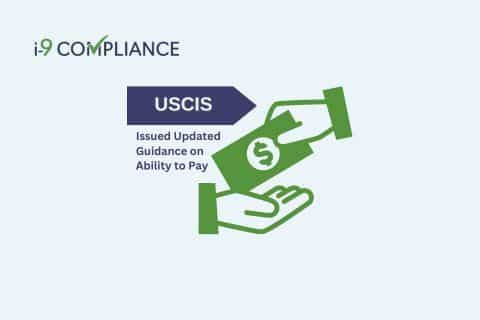USCIS Issued Updated Guidance on Ability to Pay Visa Workers

The United States Citizenship and Immigration Services (USCIS) recently updated an employment-based immigration visa policy. It addresses how the USCIS analyzes an employer’s ability to pay the offered wage for immigrant petitions in some first, second, and third-preference classifications. The guidance also mentioned situations where sponsored workers switched employers.
The USCIS released these updates to make minor technical revisions and improve clarity. Typically, employers must prove they can pay the offered wages to current or potential beneficiaries. This requirement affects employees in the first, second, and third-preference employment-based visa classifications. The employer must pay this designated wage starting on the immigration petition’s priority date until the beneficiary gains lawful permanent resident status, otherwise known as a green card.
One topic that the guidance addresses concerns Immigrant Petition for Alien Workers (Form I-140) beneficiaries. It addresses when a beneficiary changes their employer under the American Competitiveness in the 21st Century Act of 2000 (AC21) with a pending Form I-140. In such cases, the USCIS will decide whether the petitioner can pay the determined wage by reviewing the facts made available from the priority date to the date they filed Form I-140.
As a result, the USCIS will review the material submitted with the original petition. The agency will also address responses to its Requests for Evidence. The provided material will help the USCIS determine a petitioner’s ability to pay from the priority date to the date they filed the I-140 petition. Establishing this ability removes the need to provide additional evidence.
The updated guidance (Volume 6, Part E, Chapter 4 of the policy manual) became effective on January 5, 2024. It applies to petitions filed on or after the effective date. The guidance adds to the previous guidance issued on March 15, 2023, concerning an employer’s ability to pay the proffered wage. This updated guidance adds to several recent steps taken by the USCIS to support applicants filing for adjustment of status.
Employers hiring foreign nationals must remember to complete the employment eligibility verification (Form I-9) process. The USCIS requires employers to complete Form I-9s for all employees. However, many employers have found the process complicated due to the many forms of documentation they may present. One way to correctly and consistently complete it is by using an electronic I-9 management tool. This tool will guide employers through the process and store the forms and documentation.
Automate your employment eligibility verification today with the ensured compliance of I-9 Compliance.